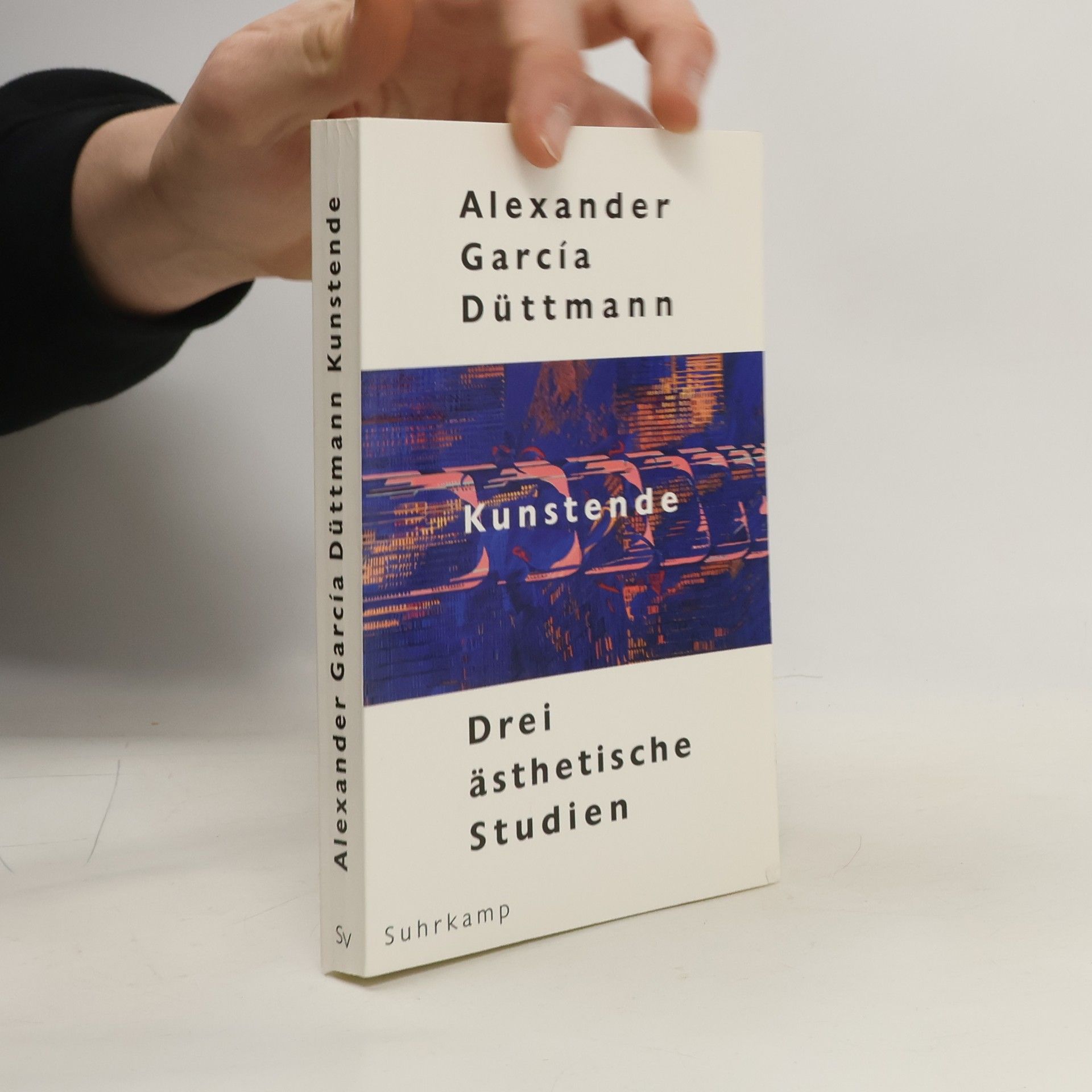"What is Contemporary Art?" by Alexander Garcia Düttmann explores the interplay between art and politics in today's context. The essay critiques how contemporary art often conforms to neoliberal ideologies, undermining its radical potential and hindering genuine social change, while engaging with key political-aesthetic discussions.
Alexander García Düttmann Books
Alexander Düttmann is a philosopher whose work engages with aesthetics and art, as well as moral and political philosophy. He has frequently collaborated with artists, demonstrating a commitment to interdisciplinary creative exploration.






Kunst. Fortschritt. Geschichte
- 254 pages
- 9 hours of reading
Spätestens 1970 hat die Kunst eine Schwelle erreicht, nach der alles möglich, alles erlaubt zu sein scheint. Durch diese Situation ist kunsttheoretisch insbesondere der Begriff des Fortschritts, und mit ihm: ein ganzes Geschichtsmodell, in die Krise geraten. Die erneuerte Rede vom "Ende der Kunst" zeugt davon ebenso wie die Ablösung der modernen Werkästhetik durch Theorien der ästhetischen Erfahrung. Während sich mithin in der philosophischen Ästhetik eine generelle Skepsis gegenüber der geschichtlichen Platzierung von Werken oder künstlerischen Strategien eingestellt hat, ist eben dies jedoch nach wie vor ein zentrales Anliegen der Kunstkritik. So ist die Feststellung von Neuem für sie ebenso elementar wie dessen normative Auszeichnung: Man kann eben doch nicht alles zu jeder Zeit machen. Und das hat nicht nur einen innerkünstlerischen, sondern immer auch einen gesellschaftlichen und politischen Sinn. Von daher stellt sich die Frage, auf welche Weise heute, mit Blick auf die Entgrenzungstendenzen in der Kunst der letzten vierzig Jahre, - doch oder immer noch - von künstlerischem Fortschritt gesprochen werden kann und welche Konsequenzen dies für den Begriff von Kunst hat. Die Beiträge des Bandes diskutieren diese Frage für Bildende Kunst, Film, Musik, Literatur und Theater.
Kaputt
Essay über Gewalt
Ursula Neugebauer
Meer ohne Horizont
In seinem neuen Buch geht Alexander García Düttmann von der These aus, dass die Jugend tot ist, weil sie mit den Eltern paktiert hat, statt sich mit den Alten zu verbünden. Der Satz, dass die Jugend tot sei, bedeutet nicht, dass es im konventionellen Sinne, also im Sinne einer Unterscheidung von Altersgruppen, keine Jugendlichen mehr gebe. Er bedeutet, dass die Jugend nicht mehr von einer Idee getragen wird, nicht mehr Träger einer Idee ist. Gerade weil die Jugend tot ist, muss das Lob der Jugend angestimmt, ihre Idee wieder stark gemacht werden: eine Idee der Jugend als anarchische Kraft, die sich nicht bezähmen, nicht durch Bildung und Erziehung reglementieren und normalisieren lässt
Naive Kunst
Ein Versuch über das Glück
„Als sie in San Francisco lebte, zwei Jahre lang, wusste sie nicht, dass sie glücklich war. Gemerkt hat sie es erst, als sie wusste, dass sie bald nicht mehr in der Stadt leben würde. Jetzt lebt sie schon seit über zehn Jahren nicht mehr in San Francisco. Deshalb will sie versuchen, den Bildern das erlebte Glück abzugewinnen. Hat sie das erlebte Glück überhaupt erlebt?“ Das Gefühl des Glücks, dem Daphne, die Protagonistin in Alexander García Düttmanns erster Prosaveröffentlichung, nachspürt, entzieht sich nicht erst im Nachhinein der bewussten Vergegenwärtigung. Weil die Bedingung seiner Gegenwart Unwissenheit ist, übt sich Daphne in der Kunst der Naivität: das Glück in denjenigen „imitations of life“ erfahrbar zu machen, die mit ihrem Leben in San Francisco verbunden sind. Ihre Kunst ist eine Kunst der Verwandlung: Daphne baut ihre Erfahrung der Stadt wieder auf, sie schichtet Erinnerungsstein auf Erinnerungsstein, bis ihr dargestelltes Leben als das einer „Mrs. San Francisco“ erscheint – als singuläres Bild des Lebens der Stadt selbst. Der erste Prosatext, der in der Kleinen Edition erscheint, trägt der Tatsache Rechnung, dass „Theorie“ nicht an die Form des theoretischen Textes gebunden ist. Ihre Einsichten entfalten sich auch dort, wo die Eigenart ihres Gegenstandes – die Nachträglichkeit des Glücks – eine ihm entsprechende Artikulationsform erfordert: eine zugleich prosaische und „naive“ Kunst.
Kunstende
- 168 pages
- 6 hours of reading
Mit dem Enstehen eines jeden Kunstwerkes beginnt Kunst von neuem, gelangt sie erneut an ihr Ende. Wenn also Kunst nicht einfach gegeben ist und der Künstler sich nicht einfach auf ihr Existenzrecht verlassen kann, dann hat auch ihr Ende keine im voraus bestimmbare Bedeutung. In der Kunst geht es stets um ihr Ende, ihr Ende ist aber stets ein Kunstende.
